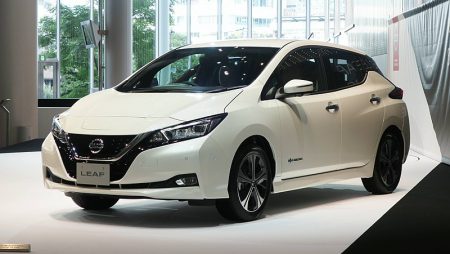A decade since its creation and into its second generation, the first mass-market electric car is established and here to stay. We drive an original and a new e+ and trace its development
Ten years ago, with then all-powerful Carlos Ghosn standing in the foreground to accept plaudits, Nissan revealed its revolutionary Leaf, a Ford Focus-sized hatchback and the world’s first modern mainstream EV.
Its design and development had cost about £4 billion, Nissan insiders boasted, which was around double what they would have had to spend on a similarly sized conventional car. But, they said, their view of the future made that outlay well and truly worthwhile – and so it has proved.
Reception of the Leaf was mixed. Futurists, early adopters and the eco-minded all admired the confidence of Ghosn and co in seeing where car engineering would need to go, but industry pragmatists were much less sure. Where were the customers for this car or the market forces that would make car buyers, always conservative, take it seriously? People rarely change their habits without powerful inducements, and there were none here.
It helped that the world’s motoring journalists were encouraging. Many hadn’t driven a decent electric car until their first go in a Leaf so had laboured under the delusion that an EV would be as sluggish and unresponsive as the proverbial milk float or golf buggy. (A delusion that took longer to shift among potential customers and still lingers today.)

They loved the Leaf’s simplicity, refinement and responsiveness, thus it was voted both Europe’s Car of the Year and World Car of the Year in 2011 – better recognition than even Ghosn and his most optimistic colleagues could have expected.
To underscore the Leaf’s decade of achievements, crowned by the fact that global sales of this UK-made car have now passed 500,000 in 59 countries (and a third of them in Europe), we decided to borrow both an original and a current model from Nissan to view and drive them – and, above all, to compare them for steadiness of concept. After all, many of Nissan’s decisions back in the 2000s, when it was deciding what EV owners would want, were essentially shots in the dark.
The early Leaf we found was a 30kWh ‘station car’ in near-perfect order because of a low mileage and a fastidious owner; the current car was an example of the recently launched Leaf e+, packing more than twice the power and range of that original, and with 0-62mph acceleration that shaved more than 3.0sec off the 2011 model’s perfectly respectable 9.9sec.
Such progress in a decade paints an interesting picture of the speed and direction of all EV development: the latest Leaf may be dynamically more capable but it also, despite growing very little in its exterior dimensions, adds handily to the original’s cabin and boot space.
In early 2011, the Leaf created immediate headlines by playing an unexpected but vital role in Japan’s recovery from a disastrous earthquake and consequent tsunami. With regular supplies knocked out, power from Leaf batteries provided much-needed electricity and light to assist Japan’s doctors to continue treating patients in some of the worst-affected areas. A total of 4.8 million households lost power; and Nissan provided 66 Leafs, grabbed back from early distribution, to power clinics and operating theatres.
This unique-to-Leaf contribution has been repeated several times since in Japan, which suffers 10% of the world’s earthquakes and experiences frequent typhoons.
Nissan has since made its EVs’ ability to ‘give something back’ a powerful selling point: working through a suitcase-sized power converter, a fully charged Leaf can power an average house for between two and four days, and when the power is expended, it can travel to an EV charger and return to do it all again. Small wonder that Nissan is a leader in efforts to portray EVs as lifesaving power sources as well as mere cars. The day is fast coming, says Nissan, when EVs will play a full-time role in powering households.
Read more: AUTOCAR
It’s Time to Go Green!
If you would like to know more about Solar Panels and the PowerBanx range of home battery systems, and get a free instant quote, please complete our online form:

